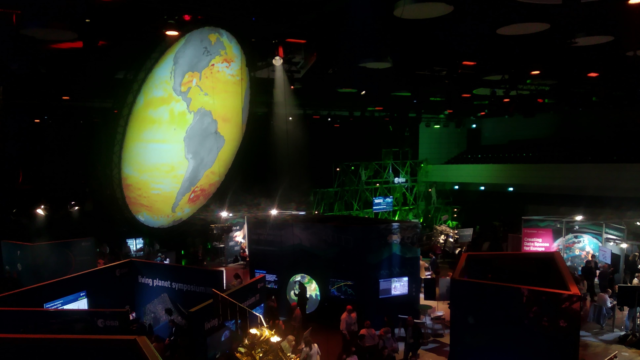Looking back at the Living Planet Symposium
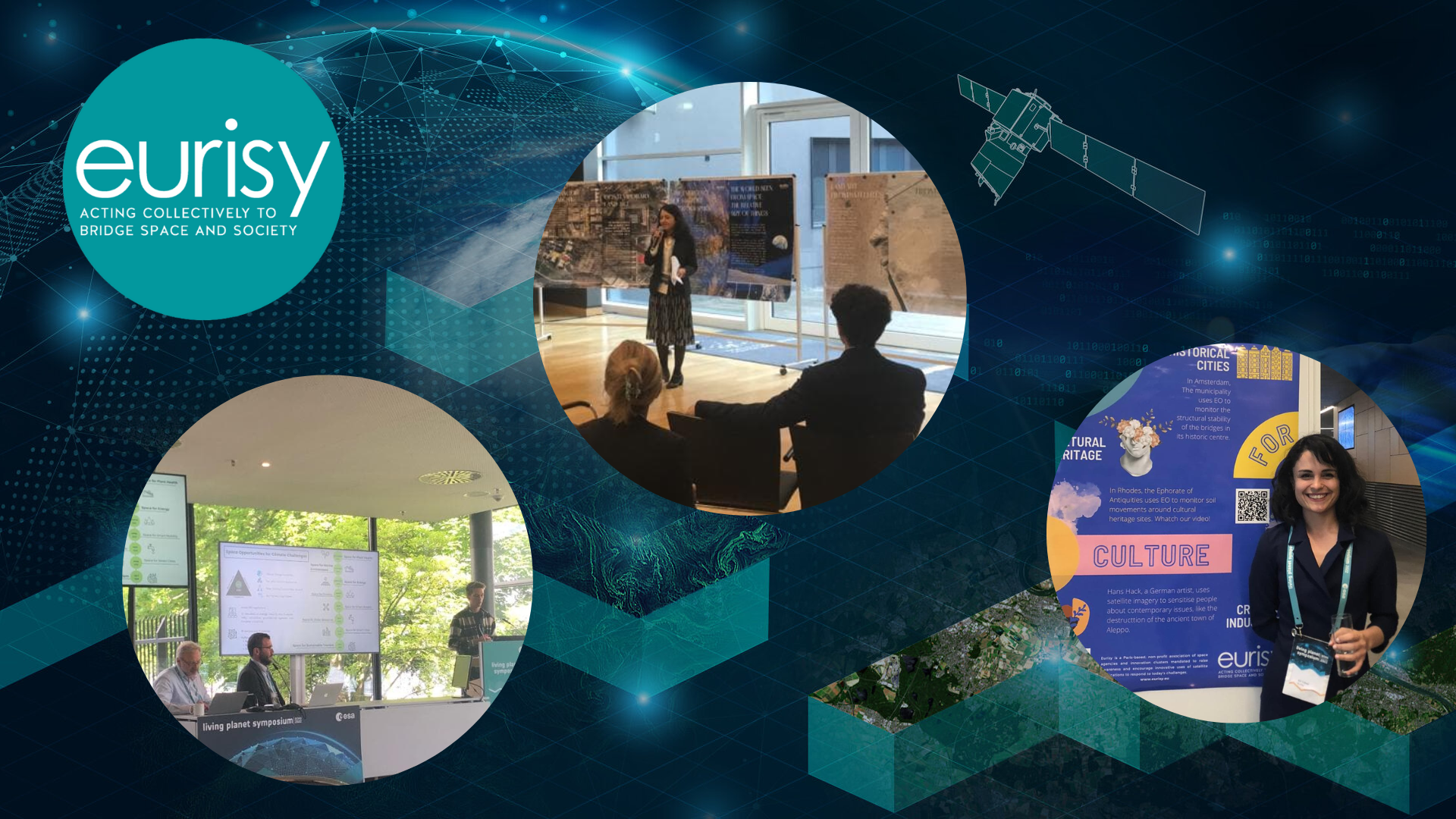
The Living Planet Symposium (LPS), held every three years by the European Space Agency (ESA), is the world’s biggest Earth Observation Conference. The Living Planet Symposium brings together scientists and researchers from all over the world to discuss the latest technology developments, exchange ideas on cutting-edge solutions, find partners and collaboratively examine how EO can further contribute to solving pressing global challenges such as climate change. This year, from the 23rd to the 27th of May, the LPS22 was held at the World Conference Center in Bonn. During the symposium, the Eurisy team participated in different sessions related, among others to cultural heritage, arts, and climate change.
The Living Planet Symposium 2022 hosted more than 5000 participants, with 240 science sessions and over 1300 oral presentations. Throughout the week, Eurisy contributed to these record-breaking numbers with posters on Space4Maritime, Space4Culture, Space4Cities, and GIS4Schools. Our colourful posters caught the attention of many visitors, curious to learn how Eurisy has been exploring many sectors of use of satellite applications.
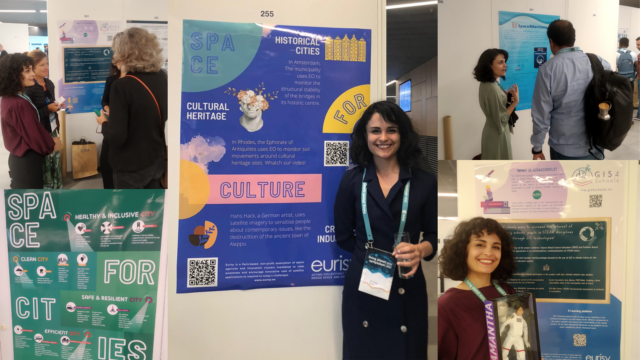
On the occasion of the breakfast networking session on Space4Arts, Ms Grazia Fiore, Eurisy Head of Programmes, accompanied the audience on a journey to discover how aerial imagery changed the conventional perspective to look at artworks and how long after satellite imagery became art itself showcasing the beauty and fragility of our planet. The Eurisy report “Messages to the above: looking at art from the sky” and the Space4Arts posters presented at the exhibition are available on the Eurisy website.
The session was chaired and organised with the support of Stefano Ferretti from ESA and Jolanda Patruno from the RHEA Group. Notwithstanding the hour, the audience nurtured a lively discussion on the capacity of satellite images to serve as a means to deliver educational, political and social messages, while influencing arts and our relationship with the environment.
The comments from the audience, with people coming from different backgrounds, ended the presentation with a fruitful interaction. Satellites can add a new perspective to land art. Watching our planet from space in all its glory, uncovering archaeological sites, and perceiving artworks from outer space, it carries an undeniable fascination and blurs the lines between art and science. Satellite images can deliver educational, political and social messages, while influencing arts and our relationship with the environment. Indeed, within the context of education a secondary school teacher commented on how it can be a source of inspiration and fun for her students.
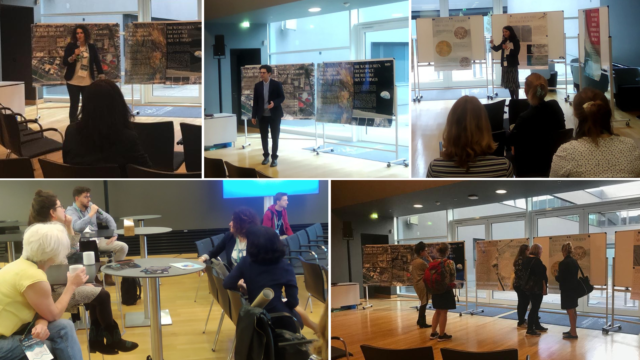
During the session on the role of Earth Observation in climate services, Eurisy presented satellite-based data for the European green transition. Satellites orbiting the Earth are the only real way of getting a full picture of our changing world – which is an essential input for international climate and environmental policy. This was demonstrated throughout the Space Opportunities for Climate Challenges initiative which covered the potential of satellite applications in different domains to reach EU Climate-Neutrality by 2050. The series collected specific use cases contributing to the Green Deal targets ranging from protecting biodiversity, to supporting renewable energy, and sustainable maritime activities.
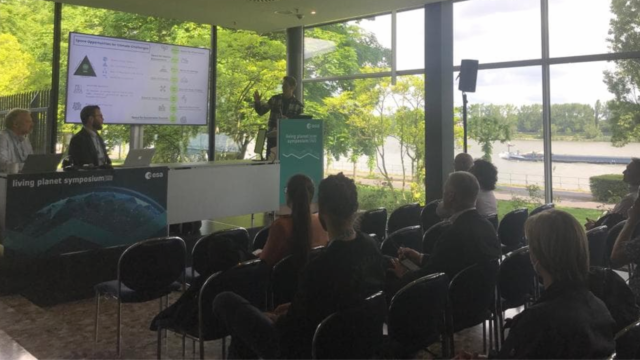
In ESA’s Cultural Heritage panel, focus was placed on the need to digitise cultural heritage and on the potential of EO to support the identification, safeguard and promotion of our common heritage. It was pointed out that the fragmentation among the institutions dealing with cultural heritage is one of the biggest challenges to the operational and continuous use of Earth observation. Eurisy contributed to the panel by giving examples of uses of satellite-based services that are matured and already reached the market. A collection of operational satellite applications to better manage historical cities, monitor and safeguard cultural heritage and enable creative minds to generate new ways to experience culture is available here.
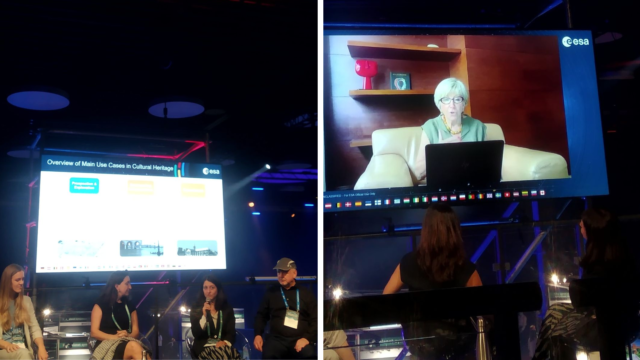
The week was packed with speeches and sessions gathering scientists, business leaders, and representatives from space agencies, international organisations and industry to highlight the essential role of Earth observation for decision-making in the ongoing climate crisis. Within the Space4Environment thematic area, Eurisy aims to continue to put emphasis on the use of space data for climate action, from the local city level to a global scale, and from empowering pupils at school to supporting decision-makers at European Institutions.
